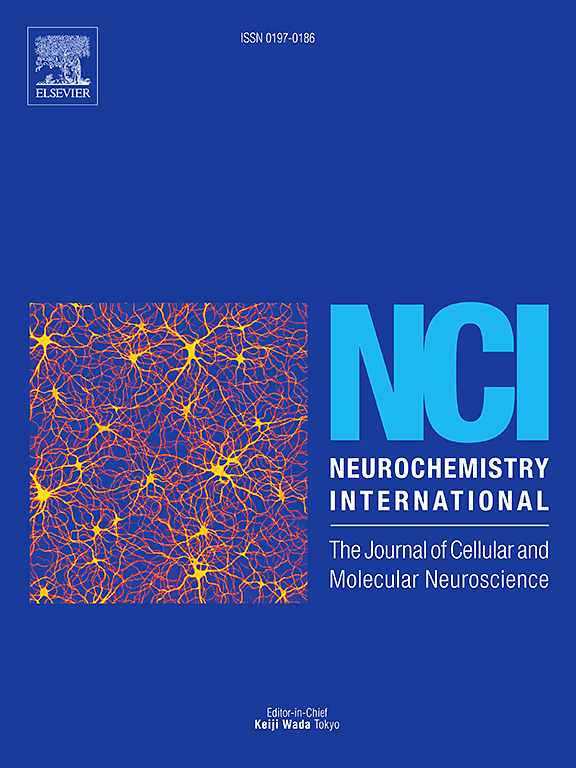中枢神经系统表达oprm1神经元的多尺度图谱:全脑分布、回路功能和翻译治疗意义
IF 4
3区 医学
Q2 BIOCHEMISTRY & MOLECULAR BIOLOGY
引用次数: 0
摘要
由Oprm1基因编码的mu-阿片受体(MOR)对疼痛感知、奖励行为、情绪调节和自主控制等多种生理过程具有重要的调节作用。表达oprm1的神经元的遗传复杂性和区域特异性分布是阿片类药物治疗作用和不良反应的基础。在这篇综合综述中,我们通过整合遗传标记、神经解剖图谱、功能电路分析和翻译观点,系统地构建了整个中枢神经系统(CNS)表达oprm1神经元的多尺度图谱。我们强调了三个相互关联的方面:(1)全脑区域分布模式,揭示了在感觉、边缘和自主神经回路中丰富的Oprm1表达;(2)表达oprm1的神经元的功能异质性,阐明了它们在伤害感受、奖励加工、情绪和神经内分泌调节中的独特作用,特别强调了性别差异和应激下的适应可塑性;(3)治疗干预的转化机会,重点是创新策略,如电路特异性阿片类药物调节和偏倚激动作用,旨在优化镇痛效果,同时最大限度地减少成瘾倾向和呼吸抑制。此外,我们批判性地研究了现有的挑战和知识空白,包括受体运输机制,慢性阿片类药物暴露或应激条件下Oprm1表达的动态变化,物种间差异和网络水平阿片类药物信号动力学。这一综合框架提供了对MOR神经生物学的重要见解,促进了利用神经回路精确调节和分子药理学进步的下一代阿片类药物的发展。理解这些方面的翻译意义强调在整个审查,旨在桥梁基础神经生物学的发现与临床应用。本文章由计算机程序翻译,如有差异,请以英文原文为准。
A multiscale atlas of Oprm1-expressing neurons in the central nervous system: Brain-wide distribution, circuit functions, and translational therapeutic implications
The mu-opioid receptor (MOR), encoded by the Oprm1 gene, critically modulates diverse physiological processes including pain perception, reward behaviors, emotional regulation, and autonomic control. The genetic complexity and region-specific distribution of Oprm1-expressing neurons underpin both the therapeutic actions and adverse effects of opioid drugs. In this comprehensive review, we systematically construct a multiscale atlas of Oprm1-expressing neurons throughout the central nervous system (CNS) by integrating genetic labeling, neuroanatomical mapping, functional circuit analyses, and translational perspectives. We highlight three interconnected aspects: (1) brain-wide regional distribution patterns, revealing enriched Oprm1 expression across sensory, limbic, and autonomic circuits; (2) functional heterogeneity of Oprm1-expressing neurons, elucidating their distinct roles in nociception, reward processing, emotional and neuroendocrine regulation, with a particular emphasis on sex differences and adaptive plasticity under stress; (3) translational opportunities for therapeutic interventions, focusing on innovative strategies such as circuit-specific opioid modulation and biased agonism, designed to optimize analgesic benefits while minimizing addiction liability and respiratory depression. Furthermore, we critically examine existing challenges and knowledge gaps, including receptor trafficking mechanisms, dynamic changes in Oprm1 expression under conditions such as chronic opioid exposure or stress, interspecies differences, and network-level opioid signaling dynamics. This integrative framework provides essential insights into MOR neurobiology, facilitating the development of next-generation opioid therapeutics that leverage precise modulation of neural circuits and molecular pharmacological advancements. The translational implications of understanding these aspects are emphasized throughout this review, aiming to bridge basic neurobiological findings with clinical applications.
求助全文
通过发布文献求助,成功后即可免费获取论文全文。
去求助
来源期刊

Neurochemistry international
医学-神经科学
CiteScore
8.40
自引率
2.40%
发文量
128
审稿时长
37 days
期刊介绍:
Neurochemistry International is devoted to the rapid publication of outstanding original articles and timely reviews in neurochemistry. Manuscripts on a broad range of topics will be considered, including molecular and cellular neurochemistry, neuropharmacology and genetic aspects of CNS function, neuroimmunology, metabolism as well as the neurochemistry of neurological and psychiatric disorders of the CNS.
 求助内容:
求助内容: 应助结果提醒方式:
应助结果提醒方式:


